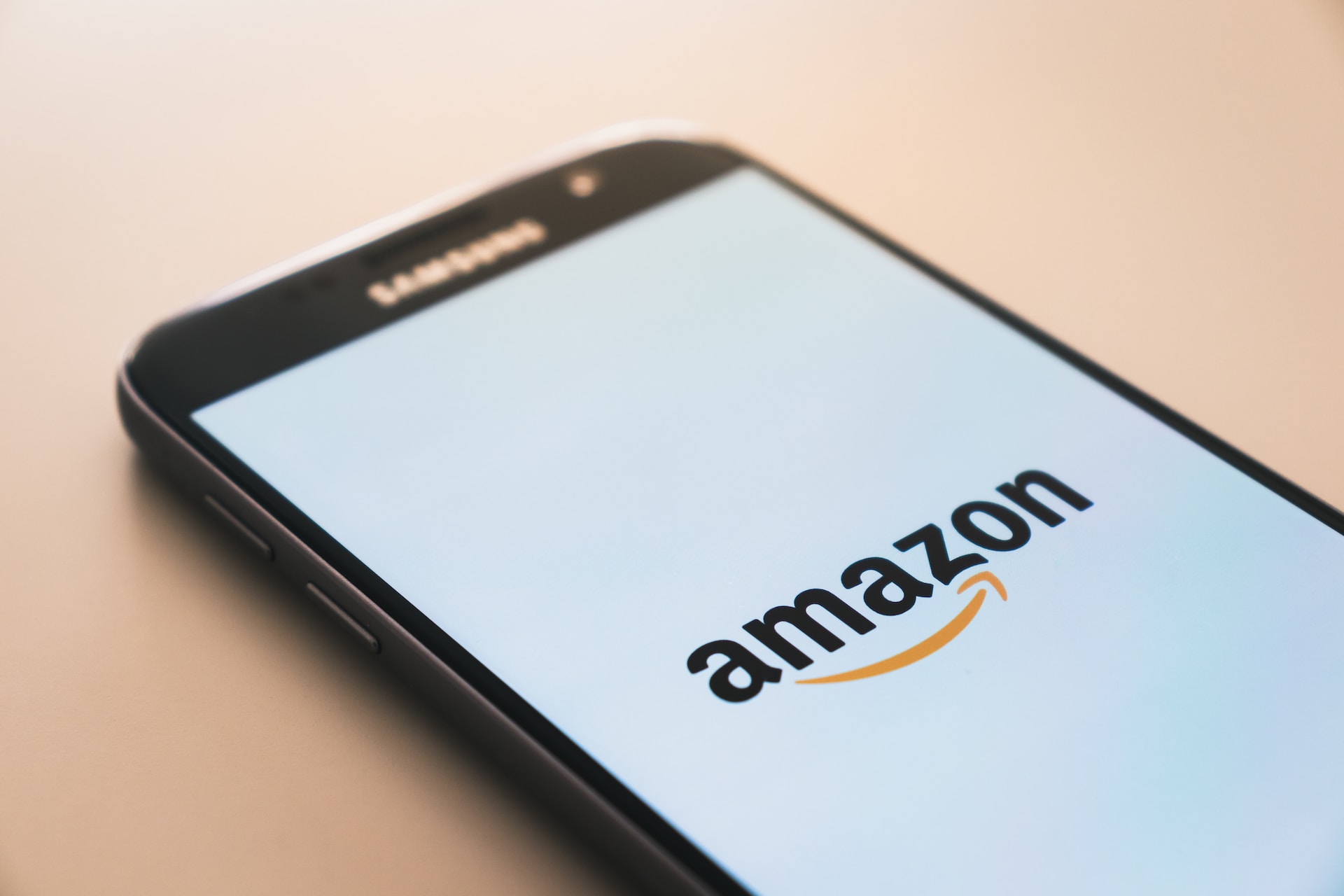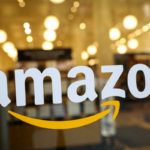Are you thinking about selling on Amazon but don’t know what to sell on Amazon?
With millions of products available on Amazon, finding the right product to sell can be overwhelming.
However, with the right strategy, you can find profitable products that meet the needs of your target audience.
One way to find profitable products to sell on Amazon is to conduct market research.
You can start by identifying a niche or product category that interests you.
Then, use Amazon’s search bar to find top-selling products in that category. Analyze the product reviews, ratings, and customer feedback to understand what customers like and dislike about the product.
This will give you insights into the gaps in the market that you can fill with your product.
Another way to find profitable products to sell on Amazon is to use keyword research tools.
These tools help you identify high-demand, low-competition keywords that customers use to search for products on Amazon.
By targeting these keywords, you can increase your visibility and attract more customers to your product listing.
You can also use Google Ads to find low-competition keywords that trigger product ads, giving you an idea of the products that customers are actively searching for.
Post Contents
What to Sell on Amazon

If you’re looking to start selling on Amazon, the first question you might ask yourself is what products to sell.
Using Amazon Search
One way to identify products that sell well on Amazon is to use Amazon’s search feature.
Type in a keyword related to your product, and see what comes up in the search results.
Take note of the products that are ranking high in the search results, as these are likely to be popular products that are selling well on Amazon.
Market Research
Another way to identify products to sell on Amazon is to conduct market research.
This involves researching your target market to identify their needs and preferences.
You can use tools like Google Trends to identify trending products, or use social media to see what products people are talking about.
You can also use competitor research to see what products are selling well for your competitors and identify gaps in the market that you can fill.
Product Opportunity Explorer
Amazon’s Product Opportunity Explorer is a tool that can help you identify products that are in high demand but have low competition on Amazon.
This tool uses data from Amazon to identify products that are selling well but have few competitors.
This can be a great way to identify products that have high potential for success on Amazon.
When deciding what products to sell on Amazon, it’s important to consider factors like demand, competition, and profit margins.
Look for products that have high demand but low competition, and that you can sell at a price that allows for a good profit margin.
Consider the logistics of selling the product, such as shipping costs and storage requirements.
Selling Plan

When you decide to sell on Amazon, you need to choose a selling plan that suits your business needs.
Let’s take a look at what you need to know about the selling plan.
Seller Central
Seller Central is the hub of your Amazon seller account.
This is where you will manage your inventory, shipping, and customer service.
You can also access reports and analytics to help you make informed decisions about your business.
It is important to keep your Seller Central account up to date with accurate information to avoid any issues with your account.
Selling Fees
Amazon charges fees for selling on their platform.
There are two types of selling plans: Individual and Professional.
The Individual plan costs $0.99 per sale, while the Professional plan costs $39.99 per month, regardless of the number of items sold.
The Professional plan offers additional features such as access to bulk listing and reporting tools and the ability to create promotions.
In addition to the selling fees, there are also referral fees and fulfillment fees.
Referral fees are a percentage of the item’s sale price, and fulfillment fees are charged for orders that are fulfilled by Amazon.
Inventory Management
Managing your inventory is essential to the success of your Amazon business.
You need to ensure that you have enough stock to meet demand, but not so much that you are left with excess inventory.
Amazon offers tools to help you manage your inventory, such as the Inventory Dashboard and the Manage Inventory page.
Restricted Products
Amazon has strict guidelines on what products can be sold on their platform. Some products are prohibited, while others require approval before they can be sold.
It is important to familiarize yourself with Amazon’s policies to avoid any issues with your account.
You can find more information on restricted products on the Amazon Seller Central website.
Listing Optimization
When it comes to selling on Amazon, optimizing your product listings is crucial to your success.
By optimizing your listings, you can increase your visibility, attract more customers, and ultimately boost your sales.
Keywords
One of the most important aspects of listing optimization is choosing the right keywords.
Keywords are the words or phrases that customers use to search for products on Amazon.
By including relevant keywords in your product title, description, and bullet points, you can increase your chances of appearing in search results.
To find the best keywords for your product, start by doing some keyword research.
Use tools like Amazon’s search bar, Google Keyword Planner, or a third-party tool like Jungle Scout to identify relevant keywords with high search volume and low competition.
Once you have a list of keywords, include them in your product listing in a natural and organic way.
Product Listing
Your product listing is the first thing customers see when they come across your product on Amazon.
It’s important to make a good first impression by creating a clear and compelling product listing.
Here are some tips for optimizing your product listing:
- Use clear and concise language to describe your product
- Highlight the key features and benefits of your product
- Include high-quality images that showcase your product from multiple angles
- Use bullet points to break up your product description and make it easy to read
- Provide accurate and detailed information about your product, including dimensions, materials, and any other relevant details
Images
Images are a crucial part of your product listing.
They provide customers with a visual representation of your product and can help them make a purchasing decision.
Here are some tips for optimizing your product images:
- Use high-quality images that are clear and well-lit
- Show your product from multiple angles
- Use lifestyle images to show your product in use
- Use infographics or diagrams to highlight key features and benefits
- Follow Amazon’s image guidelines to ensure your images meet their requirements
By optimizing your listings with the right keywords, a clear and compelling product listing, and high-quality images, you can increase your visibility, attract more customers, and ultimately boost your sales on Amazon.
Competitive Analysis

When it comes to selling on Amazon, competitive analysis is a crucial step in determining what products to sell.
By analyzing your competitors, you can gain insights into the demand for certain products, the level of competition, and the quality of product reviews.
Demand
Before you start selling a product on Amazon, it’s important to determine whether there is enough demand for it.
You can use tools like Jungle Scout or Helium 10 to analyze the sales volume and demand for a particular product.
Look for products with a consistent sales history and a high demand to ensure that you can make a profit.
Competition
Analyzing your competition is essential to determine whether you can compete in a particular market.
Look for products with a low level of competition to increase your chances of success.
You can use tools like AMZScout or Sellics to analyze the competition and determine the number of sellers, their pricing strategies, and their sales volume.
Product Reviews
Product reviews are an essential aspect of selling on Amazon.
They can impact your sales and your product’s visibility on the platform.
Analyzing your competitors’ product reviews can give you insights into the quality of their products, the level of customer satisfaction, and areas where you can improve.
Use tools like FeedbackWhiz or ManageByStats to analyze your competitors’ reviews and identify areas where you can differentiate yourself.
In conclusion, conducting a competitive analysis is an essential step in determining what products to sell on Amazon.
By analyzing the demand, competition, and product reviews, you can gain insights into the market and make informed decisions about your product selection.
Marketing Strategies
When it comes to selling on Amazon, marketing strategies are crucial to the success of your business.
Advertising
Amazon offers various advertising options to help you promote your products and reach a wider audience. These include Sponsored Products, Sponsored Brands, and Sponsored Display Ads.
Sponsored Products are keyword-targeted ads that appear in search results and on product detail pages, while Sponsored Brands and Sponsored Display Ads are more visual and appear on the top and bottom of search results pages.
To create a successful advertising campaign on Amazon, you need to identify your target audience, choose the right keywords, and create compelling ad copy.
You should also monitor your campaigns regularly and make adjustments as needed to optimize your results.
Promotions
Running promotions is another effective way to boost your sales on Amazon.
You can offer discounts, coupons, or free shipping to incentivize customers to buy your products.
Amazon offers several types of promotions, including Lightning Deals, Coupons, and Deals of the Day.
To create a successful promotion, you need to identify the right products, set a competitive price, and promote your deal effectively.
You should also monitor your promotion’s performance and adjust your strategy as needed to achieve your goals.
Referral Fees
Amazon also offers a referral fee program that allows you to earn a commission on every sale made through your referral link.
This program is a great way to earn passive income and promote your products to a wider audience.
To maximize your earnings through the referral fee program, you need to choose the right products to promote, create high-quality content that promotes those products, and drive traffic to your referral links.
You should also monitor your earnings and adjust your strategy as needed to increase your revenue.
Seller Tools

As an Amazon seller, you have access to a variety of tools to help you manage your business.
Here are a few of the most useful tools you can use to make your Amazon selling experience smoother and more profitable.
Third-Party Tools
Third-party tools are software programs created by companies other than Amazon that are designed to help you manage your Amazon account.
These tools can help you with everything from product research to inventory management to customer service.
Some of the most popular third-party tools for Amazon sellers include:
- Jungle Scout: This tool provides product research and analytics to help you find profitable products to sell on Amazon.
- Helium 10: This tool offers a suite of tools for product research, keyword research, and listing optimization.
- FeedbackWhiz: This tool helps you manage your Amazon feedback and reviews.
Amazon Seller App
The Amazon Seller App is a mobile app that allows you to manage your Amazon business on the go.
With the app, you can:
- Monitor your sales and inventory
- Manage your listings
- Respond to customer messages
- View your orders and shipments
- Analyze your business performance
The Amazon Seller App is available for both iOS and Android devices.
Insights
Amazon provides a variety of insights and reports to help you understand your business performance and make informed decisions.
Some of the most useful insights include:
- Sales Dashboard: This report provides a summary of your sales and orders over a specific period of time.
- Inventory Dashboard: This report shows you the status of your inventory, including how much you have in stock and how long it will last.
- Advertising Reports: These reports provide data on your advertising campaigns, including impressions, clicks, and conversions.
By using these tools and insights, you can optimize your Amazon selling strategy and grow your business.
Shipping and Fulfillment
When selling on Amazon, it’s important to consider how you will handle shipping and fulfillment.
This includes managing your inventory, shipping products to customers, and packaging your products for safe delivery.
Here are some tips to help you get started.
Inventory
To ensure that you can fulfill orders in a timely manner, it’s important to keep track of your inventory levels.
You can use Amazon’s inventory management tools to track your inventory and set up automatic reorder notifications when your stock runs low.
This will help you avoid stockouts and ensure that you can fulfill orders promptly.
Shipping
When it comes to shipping, there are two main options: Fulfillment by Amazon (FBA) or Fulfillment by Merchant (FBM).
With FBA, Amazon handles the shipping and fulfillment for you, while with FBM, you handle everything yourself.
FBA can be a good option if you want to save time and have Amazon handle the logistics, but it does come with additional fees.
FBM can be more cost-effective, but it requires more time and effort on your part.
Packaging

Proper packaging is crucial to ensure that your products arrive safely and intact.
Make sure to use high-quality packaging materials, such as sturdy boxes, bubble wrap, and packing peanuts.
You can also use Amazon’s packaging requirements to ensure that your packages meet their guidelines.
This will help you avoid any issues with damaged or lost products.
Customer Service
As an Amazon seller, providing excellent customer service is crucial to your success.
It can make the difference between a one-time customer and a loyal, repeat customer.
Here are some tips to help you provide the best customer service possible.
Customer Experience
The customer experience is everything from the moment they land on your product page to when they receive their order.
Here are some ways to improve the customer experience:
- Accurate product descriptions: Make sure your product descriptions are accurate and detailed. Include all relevant information, such as dimensions, materials, and care instructions.
- Quick response times: Respond to customer inquiries as quickly as possible. This shows that you value their time and are committed to providing excellent customer service.
- Fast shipping: Offer fast and reliable shipping options. This can help increase customer satisfaction and reduce the likelihood of negative feedback.
Customer Feedback
Customer feedback is essential for improving your products and customer service.
Here are some ways to encourage customers to leave feedback:
- Follow up emails: Send a follow-up email after the customer receives their order. Ask them to leave feedback and provide a link to the product page.
- Product inserts: Include a product insert with your order that encourages customers to leave feedback. You can also offer a discount on their next purchase as an incentive.
- Respond to feedback: Respond to both positive and negative feedback. This shows that you value customer opinions and are committed to improving your products and service.
Providing excellent customer service can help you stand out as an Amazon seller.
By focusing on the customer experience and encouraging feedback, you can build a loyal customer base and improve your business.
Product Ideas
If you’re looking for product ideas to sell on Amazon, you’re in the right place.
In this section, we’ll cover some tactics to help you find the best products to sell online in 2024.
Best Sellers List
One of the easiest ways to find product ideas is to check out the Amazon Best Sellers list.
This list is updated hourly and shows the top-selling products in each category.
By looking at the Best Sellers list, you can get an idea of what products are currently in demand and what customers are buying.
To find the Best Sellers list, go to the Amazon homepage and click on the “Best Sellers” link in the top menu.
From there, you can browse the Best Sellers in each category or search for specific products.
Product Research
Another way to find product ideas is to conduct product research.
Product research involves analyzing market trends, customer behavior, and competitor products to identify gaps in the market that you can fill with your own products.
To conduct product research, you can use tools like Helium 10 or Jungle Scout, which allow you to analyze Amazon data and identify profitable products.
You can also use Google Trends to see what products are trending and what customers are searching for.
Hot New Releases
Finally, you can also find product ideas by checking out the Hot New Releases list on Amazon.
This list shows the top-selling products that have been released in the last 30 days.
By looking at the Hot New Releases list, you can get an idea of what products are gaining popularity and what customers are interested in.
To find the Hot New Releases list, go to the Amazon homepage and click on the “Hot New Releases” link in the top menu.
From there, you can browse the Hot New Releases in each category or search for specific products.
By using a combination of these tactics, you can find product ideas that are in demand, profitable, and unique.
Remember to do your research and analyze the market before launching any products, and always prioritize customer needs and preferences.
Private Labeling
If you’re looking to sell on Amazon, private labeling is a great way to differentiate yourself from the competition.
Private label products are products that are manufactured by a third-party supplier, but sold under your own brand name.
This allows you to create a unique product that stands out from the rest. Here are some things to consider when private labeling on Amazon.
Private Label Products
When choosing a private label product to sell on Amazon, it’s important to do your research.
Look for products that are in high demand, but have low competition.
This will help ensure that your product gets noticed and sells well.
You can also use tools like Jungle Scout or Helium 10 to help you find profitable products.
Once you’ve found a product to sell, you’ll need to create your own branding and packaging.
This is where you can really differentiate yourself from the competition.
Make sure your branding is eye-catching and memorable.
You can also include additional features or benefits to your product to make it more appealing to customers.
Supplier
Finding a reliable supplier is crucial when private labeling on Amazon.
You want to make sure that you’re working with a supplier that produces high-quality products and can deliver them on time.
You can find suppliers on Alibaba or other sourcing websites.
Make sure to ask for samples before placing a large order to ensure that the quality meets your standards.
SKU
When creating your Amazon listing, you’ll need to create a unique SKU (stock keeping unit) for your product.
This is a unique identifier that helps Amazon keep track of your inventory.
Make sure to choose a SKU that’s easy to remember and helps you keep track of your inventory.
In conclusion, private labeling on Amazon can be a great way to differentiate yourself from the competition and create a unique product.
Make sure to do your research, find a reliable supplier, and create a memorable brand and packaging.
Amazon Handmade

If you’re looking to sell handmade products on Amazon, Amazon Handmade is the perfect platform for you.
It’s a marketplace exclusively for artisans and provides a great opportunity to showcase your unique products to a massive audience.
Here are some things you need to know about Amazon Handmade:
Apply to Sell
To start selling on Amazon Handmade, you need to apply for an account.
Once you’ve created a seller account, submit an application to join Amazon Handmade.
The application process can take weeks or even months, as Amazon has a high bar for quality, and each application needs to be thoroughly audited and approved by a human.
However, once you’re approved, you’ll be able to sell your products without paying the Professional selling fee.
Fulfill Orders
When you receive an order on Amazon Handmade, you need to fulfill it yourself.
Amazon doesn’t provide any fulfillment services for Handmade orders.
You’ll need to package and ship your products to the customer on your own.
However, Amazon does provide a shipping credit to help offset the cost of shipping.
Promote
To succeed on Amazon Handmade, you need to promote your products effectively.
Here are some tips:
- Optimize your product listings with high-quality photos and detailed descriptions.
- Use Amazon’s advertising tools to increase visibility and drive traffic to your listings.
- Leverage social media to promote your products and engage with your audience.
- Offer promotions and discounts to incentivize customers to buy from you.
=Amazon Handmade is a great platform for artisans to sell their handmade products.
With a little effort and creativity, you can succeed on Amazon Handmade and build a profitable business.
Key Takeaways
When it comes to selling on Amazon, there are a few key takeaways to keep in mind to help you succeed.
1. Choose the Right Products
One of the most important things you can do is choose the right products to sell.
Look for products that are in demand, have high profit margins, and are not too competitive.
Use tools like Jungle Scout or Helium 10 to help you with product research and find profitable niches.
2. Optimize Your Listings
Once you have chosen your products, it’s important to optimize your listings to make them stand out.
Use high-quality images, clear and concise product descriptions, and relevant keywords in your titles and bullet points.
This will help your products rank higher in Amazon’s search results and attract more customers.
3. Price Competitively
Pricing is another important factor in selling on Amazon.
You want to price your products competitively, but also make sure you are making a profit.
Use tools like CamelCamelCamel to track price history and adjust your prices accordingly.
4. Utilize Amazon FBA
Fulfillment by Amazon (FBA) can help streamline your business and make it easier to sell on Amazon.
With FBA, Amazon handles the storage, shipping, and customer service for your products.
This can save you time and money, and also give you access to Amazon Prime customers.
5. Monitor Your Metrics
Finally, it’s important to monitor your metrics and adjust your strategy as needed.
Keep an eye on your sales, profits, and customer feedback.
Use this information to make informed decisions about pricing, product selection, and marketing strategies.
By following these key takeaways, you can increase your chances of success when selling on Amazon.
Remember to stay focused, be patient, and always be willing to adapt and improve your approach.






























